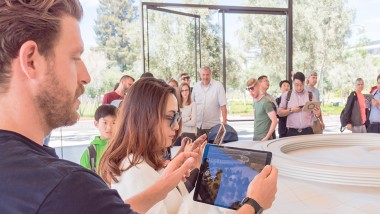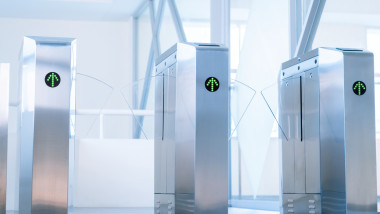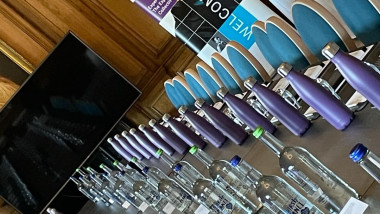How to Eradicate the J-Curve in Private Equity?
Discover an effective way to access European small and mid-cap private equity companies.
Key Takeaways:
- Private Equity Investors often wait several years for their capital to be deployed. Some of them would like to put their money to work faster to achieve their allocation targets.
- There is a solution to mitigate or even eradicate the J-curve and to reduce the overall duration of a private equity portfolio. A private equity strategy, devised by Euro-PE, combines secondary investments and co-investments.
- This strategy focuses on European small and mid-cap private companies, an attractive segment of the growing private equity universe.
Private equity has, over a number of decades, delivered to investors everything it promised. In return for long lock-up times, investors have generally received attractive risk adjusted returns, often with double-digit annual performance. Private equity has been successfully implemented in portfolios to provide diversification and, for some investors, to deliver against long-term liabilities. But the J-curve can be a fly in the ointment for some. Investors often wait several years for their capital to be called and invested and this capital is then depleted as transaction costs and asset improvement costs eat into cash. All the while, investors are paying management fees to the private equity managers on the capital committed.
It is true that a well-managed private equity fund should provide distributions within a few years of the capital being called and deliver strong returns over the lifetime of the fund. It’s just a pity that the J-curve is so baked into the cake.
In an ideal world, most investors would like that cake recipe to evolve a little, so their money is put to work faster and they receive distributions earlier. Should that happen, the private equity exposure would grow quicker and investors would be able to reinvest early distributions to, potentially, improve their overall portfolio returns.
But, as the culinary saying goes, you can’t have your cake and eat it.
Or can you?
Cooking with more heat
Actually, there is a way of mitigating the J-curve and reducing the duration of the overall private equity portfolio.
A private equity strategy, devised by Euro-PE, an affiliate of Natixis Global Asset Management, combines secondary investments and co-investments, enabling investors’ capital to be called faster and returned more rapidly too whilst maintaining a positive performance level very early on. This is clearly more efficient in terms of cost, deployment of capital and interim returns. In effect, it is cooking with more heat.
While both these types of private equity strategies were niche in the past, they are growing rapidly, offering more investment opportunities and ever-greater diversification benefits.
Within the private equity universe, the Euro-PE strategy focuses on European small and mid-cap private equity backed companies. This gives investors access to high-growth companies, but also mitigates rising purchase multiples. Entry multiples are historically high across the private equity universe overall, but the small and mid-cap segment remains comparatively more attractive with less leverage being used on average. It is a bit like baking tasty home-made bread whilst using less yeast.
The co-investment advantage
Co-investments accelerate the investment process because it is possible to invest directly into an underlying company and call 100% of an investor’s cash up front. Euro-PE co-invests alongside carefully selected small- and mid- cap fund managers who can successfully leverage their core strengths. Euro-PE refers to this as “sweet spot” investing, one of the best ways to avoid negative selection when picking a co-investment.
A private equity “sweet spot” is where a fund manager applies an identifiable, repeatable specific skill to an investment. This skill relates to the size of an investment, the target ownership, geography, sector, investment themes and so on. Industry research has found that deals which fall within a fund manager’s sweet spot consistently and significantly outperform transactions that stray from it1. On average, the multiple earned on sweet spot deals is 2.2x invested capital versus 1.3x on deals that deviate from the fund manager’s sweet spot.
Euro-PE is able to access these “sweet spot” opportunities by leveraging the deal flow generated from its long-standing manager relationships. Around 80% of co-investment deals are sourced from existing manager relationships and every deal, regardless how sourced, meets the sweet spot criteria.
These relationships are predicated on the quality of the fund managers. Euro-PE emphasises strategic and operational know-how that can transform established, high-potential companies into stronger and more valuable champions of their sectors. But, unlike many funds targeting small-cap companies, it focuses closely on downside risk too.
Euro-PE’s due diligence particularly focuses on downside protection, with GPs evaluated for leverage and purchase valuation levels. Euro-PE runs a financial model on all its co-investment opportunities, including crash scenarios to see what the breaking points of deals may be. And in its highly disciplined portfolio construction process, the team avoids over-concentration by sector, geography or GP.
Not only must underlying managers possess specific, identifiable skillsets, but they should also provide value-add deal structuring in terms of costs, fees and alignment of interest.
The benefits of secondaries
Euro-PE also targets smaller secondary transactions, where it can leverage its resources, capabilities and GP relationships to gain a competitive advantage.

Source: Euro-PE, as of 30 June 2017
As with co-investments, Euro-PE’s secondary investments are often sourced through trusted managers who are known quantities. Euro-PE buys individual secondary deals and also fully-invested portfolios of secondary investments. This enables faster deployment of funds than the traditional private equity structure.In a secondary transaction, the investor buys shares in a portfolio which is perhaps five to six years old. This reduces duration from around 12 to, say, seven years and ensures quick distributions and higher IRRs.
In addition, it is usually possible to buy secondary assets at a discount to the net asset value (NAV), which creates immediate value for investors. The discount can be due to a number of factors, including sellers who urgently require capital or sellers in distressed situations.
Top chefs and quality ingredients required
Both secondaries and co-investments are opportunistic strategies and deployment of capital must be carefully managed to ensure outperformance, and that returns are balanced against the risk taken. There is considerable operational and financial risk involved and poor strategies or a failed implementation can easily lose money.
The key is fund manager abilities and asset quality. Euro-PE has developed and nurtured more than 100 GP relationships and has representatives on 74 advisory boards. In terms of fund quality, a full two-thirds of Euro-PE’s commitments are made to first- or second-quartile funds.
These funds generally provide access only to large, sophisticated private equity investors who can make timely decisions, and have the required resources and internal organisation to do so. We might say that skilled and experienced chefs are required.
The proof is in the pudding
In short, Euro-PE’s strategy represents an efficient way to invest in growing small-and mid-cap private companies.
The complementary deal flows of co-investments and secondaries should ensure a steady investment pace for investors. And because each type of investment has a different cycle, it is possible to generate attractive risk adjusted returns over the lifecycle of a fund.
Last, but not least, Euro-PE targets a tasty 15% IRR level for this offering with a clear mitigation of the J-curve. In other words, investor’s capital will be put at work faster without being squandered in transaction and management fees.
The proof of the pudding, to quote another culinary saying, is in the eating.
Published in November 2017
Ostrum Asset Management
An affiliate of Natixis Investment Managers
Société Anonyme
Capital €50 434 604.76
Agréé par l’Autorité des Marchés Financiers (AMF) sous le numéro GP 90-009
RCS Paris n°329 450 738
Immeuble Elements
43 avenue Pierre Mendès France
75013 Paris
www.ostrum.com
In Switzerland, under Swiss Federal Act on Collective Investment Schemes (CISA ), Euro Private Equity is a Swiss “Independent (unregulated) asset manager” and it is supervised by CHS PP and regulated by FINMA under Anti Money Laundering requirements. The transfer / distribution of this document in Switzerland is done by / under the responsibility of Euro Private Equity SA.
In France, Euro Private Equity France is a French “Fund management company” that is a wholly-owned subsidiary of Euro Private Equity SA. It is fully covered by AIFM Directive. The transfer / distribution of this document in France is done by / under the responsibility of Euro Private Equity France.
In the EU, the transfer / distribution of this document is done by / under the responsibility of NGAM Distribution a branch of Natixis Global Asset Management, S.A.
This communication is for information only and is intended for investment service providers or other Professional Clients. The analyses and opinions referenced herein represent the subjective views of the author as referenced unless stated otherwise and are subject to change. There can be no assurance that developments will transpire as may be forecasted in this material.
Copyright © 2017 Natixis Investment Managers S.A. – All rights reserved





 Hop Aboard the US Growth Engine
Hop Aboard the US Growth Engine
 Private Assets: Making the Retail Revolution a Reality
Private Assets: Making the Retail Revolution a Reality
 LTAF Masterclass: Embracing Private Markets in DC Pensions
LTAF Masterclass: Embracing Private Markets in DC Pensions